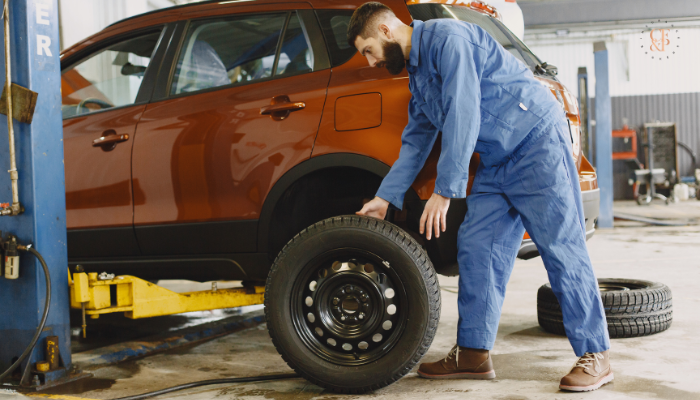



As a driver, encountering a flat tire is an inevitable part of the journey. While the inconvenience of a flat tire is well-known, many drivers wonder about the financial aspect of dealing with this common issue. Does auto insurance cover flat tires? Is it covered under warranty? How many times does insurance cover if they're slashed? In this blog, we'll explore these questions and guide you on what to do if you have a flat tire on the road.
Standard auto insurance typically does not cover repairing or replacing a flat tire. Auto insurance is primarily designed to cover damage to your vehicle resulting from accidents, collisions, or specified perils outlined in your policy. Flat tires, considered a part of regular wear and tear, are generally excluded from standard coverage.
New vehicles typically come with a manufacturer's warranty, which may include coverage for flat tires, but it depends on the warranty terms. Many warranties cover manufacturing defects and may include provisions for roadside assistance, which could help with flat tire repairs. It's essential to review your vehicle's warranty documentation to understand the specifics of what is covered.
If your tires are slashed or damaged due to vandalism, the coverage provided by auto insurance can vary. In cases of vandalism, the comprehensive coverage portion of your auto insurance may kick in. Comprehensive coverage typically covers non-collision events, including vandalism, theft, and natural disasters. However, reviewing your policy and understanding the coverage limits and deductibles associated with comprehensive coverage is crucial.
Dealing with a flat tire is a common scenario that every driver will likely face at some point. Here are the steps to take if you find yourself with a flat tire:
Move your vehicle to a safe location away from traffic, if possible. Use hazard lights to alert other drivers of your situation.
Determine the extent of the damage to your tire. If the tire is punctured and cannot be safely driven on, you must address the issue before continuing.
Many vehicles come equipped with a spare tire and the necessary tools for replacement. If your car has a spare, follow your owner's manual instructions to replace the flat tire.
If you don't have a spare tire or cannot change the tire yourself, consider calling for roadside assistance. Many auto insurance policies offer optional roadside assistance coverage, or you may have a separate roadside assistance plan.
If the tire is repairable, visit a tire repair service to assess the damage and determine if a repair is possible. A tire warranty may cover some repairs.
While auto insurance may not cover the cost of a typical flat tire repair, having the right coverage in place is crucial for other unexpected events on the road. If you're unsure about your auto insurance coverage or want to explore options that include roadside assistance or comprehensive coverage, contact us today at CF&P Insurance Brokers. Our experienced team is here to guide you through the intricacies of auto insurance and ensure you have the protection you need for all aspects of your journey. Call us at (925) 956-7700 for further assistance.